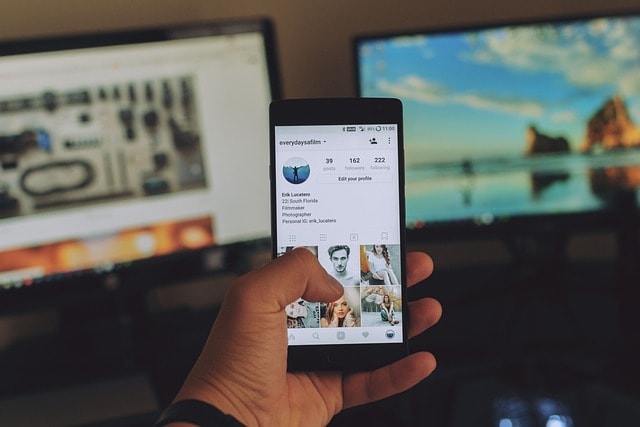In the ever-evolving landscape of digital marketing strategy, influencer marketing has emerged as a powerful tool for brands to connect with their target audience. Of the major social media outlets which ranks as being most important for influencer marketing? This question often leads marketers to evaluate their social media strategy and consider the distinct features of each platform.
As businesses seek to increase brand awareness and generate leads, understanding the strengths and user behavior on different social platforms becomes crucial. In this comprehensive article, we will explore the major social media platforms and assess their relevance in influencer marketing.
Understanding the Power of Influencer Marketing
Influencer marketing has revolutionized how brands interact with social media users. Unlike traditional advertising, influencer marketing leverages social media influencers to promote products and services.
This method of marketing depends on the credibility and reach of influencers, who often have a highly engaged audience. Influencer partnerships allow brands to tap into these audiences, creating authentic content that resonates with their target demographic. Of the major social media outlets which ranks as being most important for influencer marketing?

One of the key elements of a successful influencer marketing strategy is choosing the appropriate influencers. The selection process involves considering various factors such as the influencer’s niche, engagement metrics, and alignment with brand values.
Micro influencers, in particular, have gained popularity for their ability to engage users with authentic and relatable content. Despite having a smaller follower count, micro influencers often boast great engagement rates, making them a valuable asset for brands aiming to build relationships with their audience.
Evaluating Major Social Media Platforms for Influencer Marketing
Facebook: The Giant of Social Networks
Facebook remains one of the most popular social media platforms, with a broad audience spanning multiple age groups. With billions of monthly users, Facebook offers a diverse user base, making it an ideal platform for reaching a wide target demographic.

Of the major social media outlets which ranks as being most important for influencer marketing? Facebook users engage with a variety of content, from user-generated content to branded posts. The platform’s advertising options, such as Facebook Ads, provide businesses with tools to target specific audiences based on demographics, interests, and behaviors.
For influencer marketing, Facebook’s large audience and advanced targeting capabilities make it a powerful tool for brands. Social media influencers on Facebook can reach a diverse set of users, making it suitable for marketing objectives like increasing brand visibility and customer engagement even among the average user base.
Additionally, the platform’s engagement metrics allow marketers to measure the effectiveness of their campaigns and adjust social media influencer strategies accordingly.
Instagram: The Hub of Visual Content
Instagram has rapidly become a key player in influencer marketing, particularly among younger demographics. Known for its emphasis on visual content and hashtags, Instagram offers brands a unique opportunity to showcase their products through high-quality images and videos.

The platform’s features, such as Instagram Stories and live videos, allow influencers to create engaging and ephemeral content that captures the attention of their followers.
Instagram users, especially the younger demographic, spend a significant amount of time online, browsing through posts and stories.
This makes Instagram an excellent platform for influencer content, as it encourages great engagement and user interaction. Many brands consider Instagram their best bet for influencer marketing, given the platform’s focus on visuals and its large audience of young adults.
Of the major social media outlets which ranks as being most important for influencer marketing? Larger influencers, with millions of followers, often collaborate with brands to promote products, while micro influencers continue to play a crucial role in reaching niche audiences.
YouTube: The Power of Video Content
YouTube stands out among social media platforms for its focus on video content. With a vast library of videos covering a wide range of topics, YouTube has become a go-to platform for users seeking information, entertainment, and education.
For brands, YouTube offers an opportunity to engage with users through video content that can showcase products, demonstrate features, and tell compelling stories.

Social influencers on YouTube, known as YouTubers, have built dedicated communities around their channels. These influencers often have highly engaged audiences, making YouTube an effective platform for influencer marketing.
The platform’s distinct features, such as live video and long-form content, allow for in-depth exploration of topics and products. Brands can collaborate with YouTubers to create influencer content that resonates with viewers, increasing brand loyalty and driving website traffic.
Key Considerations for an Effective Influencer Marketing Strategy
When crafting an influencer marketing strategy, businesses must consider several key factors. First, identifying the target audience is crucial.
Understanding the social media statistics and user demographics of each platform helps in selecting the right influencers and tailoring the content to resonate with the audience.
For instance, Instagram is known for attracting a younger demographic, while Facebook has a more diverse age group.

Another important aspect is setting clear marketing objectives. Whether the goal is to increase brand awareness, drive website traffic, or generate leads, defining these objectives helps in measuring the success of the campaign.
Engaging users through authentic and relatable content is also essential. Influencer marketing thrives on authenticity, as users are more likely to trust and relate to content created by influencers they follow.
Furthermore, the choice of influencers can greatly impact the campaign’s success. Collaborating with appropriate influencers who align with the brand’s values and message is vital. Both micro influencers and larger influencers have their own advantages, and the decision depends on the campaign’s goals and budget.
The Future of Influencer Marketing on Social Media Platforms
As the landscape of social media continues to evolve, so does the role of influencer marketing. The rise of new social media platforms and features, such as TikTok and live videos, offers brands fresh avenues to explore.

With platforms constantly innovating to keep users engaged, the possibilities for creative and impactful influencer marketing are expanding.
Of the major social media outlets which ranks as being most important for influencer marketing? One trend worth noting is the increasing importance of user-generated content. Brands are encouraging their followers to create and share content related to their products, fostering a sense of community and authenticity. This strategy not only boosts brand visibility but also leverages the power of word-of-mouth marketing.
Myth Busting: Debunking Common Misconceptions in Influencer Marketing

Myth 1: Only Major Social Media Outlets Matter for Influencer Marketing
Reality: While the major social media platforms like Instagram and Facebook are prominent, niche social networks can also be highly effective. Smaller platforms with dedicated communities can offer valuable engagement metrics and targeted marketing strategies.
Myth 2: Influencer Marketing Is Just Like Traditional Advertising
Reality: Unlike traditional advertising, influencer marketing focuses on authenticity and personal connections. Social media influencers often create relatable content that resonates with their followers, making it more impactful than standard ads.
Myth 3: Social Media Influencers Need a Large Audience to Be Effective
Reality: Micro influencers can be just as effective, if not more so, than larger influencers. They often have higher engagement rates and a more loyal following, making them ideal for brands aiming to generate leads and increase website traffic.
Myth 4: Social Media Marketing Only Targets Young People
Reality: While platforms like Instagram have a significant number of young users, other social media outlets, like Facebook, have a diverse user base that includes older age groups. Effective marketing strategies can target various demographics.
Myth 5: Social Media Marketing Doesn’t Drive Sales
Reality: Influencer marketing can significantly boost sales. By leveraging content marketing and strategic partnerships with social media influencers, brands can increase brand awareness and drive conversions.
Myth 6: Social Media Statistics Don’t Matter
Reality: Engagement metrics and social media statistics are crucial for assessing the success of marketing campaigns. They provide insights into user behavior, the effectiveness of content, and areas for improvement.
Myth 7: New Brands Can’t Compete with Established Brands on Social Media
Reality: New brands can successfully compete by leveraging creative and innovative content marketing strategies. Engaging with micro influencers and focusing on niche audiences can help new brands establish a strong social media presence and attract active users.
Case Study: Leveraging Micro Influencers on Instagram for a New Brand Launch
Call-Out Box: Practical Application of Influencer Marketing
Brand: EcoGlo Skincare
Objective: Launch a new brand targeting Generation Z and generate leads
Platform: Instagram
Key Point: Using micro influencers to build a social media presence and connect with a niche target audience.
EcoGlo Skincare, a new brand focused on sustainable skincare products, wanted to establish a strong social media presence and reach Generation Z. The brand chose Instagram as the primary social media platform for its influencer marketing campaign, recognizing the platform’s large audience of active users and the significant average time spent by Generation Z browsing content.
Strategy:
EcoGlo partnered with several micro influencers, each with an Instagram account followed by 10,000 to 50,000 followers. These influencers were selected based on their alignment with the brand’s values and their engagement with eco-conscious social media users. Unlike traditional advertising, the influencers created authentic, user-generated content, showcasing the product’s benefits and their personal skincare routines.
Outcomes:
Within two months, EcoGlo experienced a 150% increase in Instagram followers and a significant boost in engagement metrics. The influencers’ posts garnered over 50,000 likes and 10,000 comments, driving substantial website traffic and resulting in a 30% increase in sales revenue generated from the campaign. The success of the campaign underscored the effectiveness of using micro influencers in social media marketing efforts to reach a highly engaged, niche audience.
Future Implications
As influencer marketing continues to evolve, several trends and challenges are likely to shape its future. The rise of new social media platforms like TikTok and emerging technologies such as augmented reality will offer novel ways for social media influencers to engage with audiences.
The increasing demand for authentic and transparent content may lead to a shift towards more niche and specialized influencers, challenging brands to identify and partner with these unique voices. Moreover, the growing emphasis on data privacy and ethical practices will require social media marketing strategies to adapt, balancing personalization with user consent.
As social media continues to integrate deeper into daily life, the ability to leverage cutting-edge trends and navigate regulatory landscapes will be crucial for brands aiming to stay relevant and effective in their social media marketing efforts.
Conclusion
Of the major social media outlets which ranks as being most important for influencer marketing? In conclusion, of the major social media outlets, each ranks as being most important for influencer marketing in its own unique way. Whether it’s Facebook’s broad audience, Instagram’s visual appeal, or YouTube’s engaging video content, the choice of platform depends on the brand’s marketing strategies and objectives.
By understanding the strengths and user behavior of each platform, businesses can craft an effective influencer marketing strategy that resonates with their target audience and achieves their marketing goals. As the digital marketing landscape continues to shift, staying adaptable and innovative will be key to leveraging the full potential of influencer marketing.
FAQ
Which social media platform is the best for influencer marketing?
The best platform depends on your target audience and goals, but Instagram is widely considered effective due to its visual nature and high engagement rates.
What are the most important influencer marketing channels?
The most important channels include Instagram, YouTube, TikTok, and Facebook, each offering unique features for engaging with diverse audiences.
What is the most used social media platform by influencers?
Instagram is the most commonly used platform by influencers, known for its visual content and Stories feature, which encourage high user engagement.
Which social media platform has the most influence on buyers?
Instagram has significant influence on buyers, especially for product discovery and brand promotions through engaging visual content and influencer partnerships.
Which social media is most effective for marketing?
Instagram is particularly effective due to its visual focus and high engagement, making it ideal for showcasing products and engaging with customers.
Which platform is used most commonly by influencers?
Instagram is the most popular platform among influencers, offering tools like Stories and Reels for creating dynamic and engaging content.
What are the most important social media channels?
The most important channels for social media marketing include Instagram, Facebook, YouTube, TikTok, and Twitter, each with its unique audience and features.
Who are the 3 major participants in the marketing channel?
The three major participants are brands, influencers, and audiences, each playing a critical role in creating and consuming content.
Who is the most important influencer?
The most important influencer varies by industry and audience; however, those with high engagement and authenticity often have the most impact.
Which social media platform has the most influence?
Instagram holds considerable influence, especially in lifestyle and fashion sectors, due to its visual nature and highly engaged user base.
What is the #1 most used social media platform?
As of the latest data, Facebook remains the #1 most used platform, with the largest global user base and extensive features.
Which social media site drives the most engagement?
Instagram is known for driving the most engagement, particularly through its interactive features like Stories, Reels, and IGTV.
What is the most valuable social media platform?
Instagram is often considered the most valuable for brands looking to engage with younger demographics and leverage visual content.
What top brand categories use influencer marketing?
Top categories include fashion, beauty, fitness, and lifestyle, where visual appeal and personal endorsements significantly impact consumer decisions.
Which social media platform has the largest audience?
Facebook has the largest audience among social media platforms, with billions of active users globally across various demographics.




Comments are closed